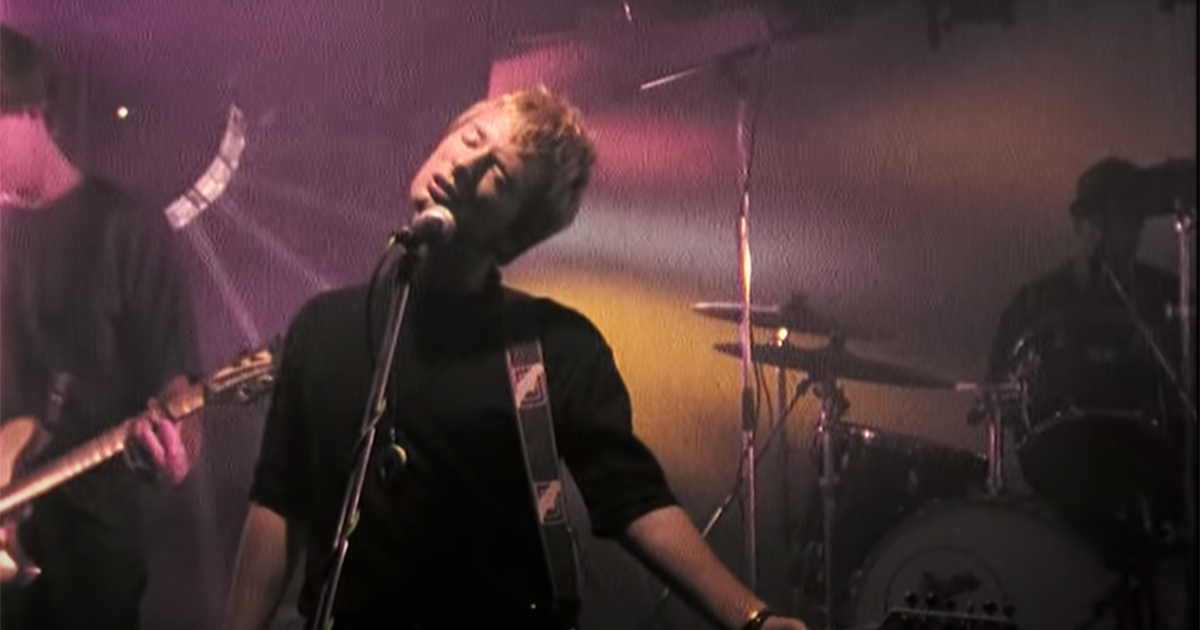Sound and vision: MTV 'Buzz Clip' analysis reveals associations
LAWRENCE – In the heyday of music videos, cross-dressing was white, and baldness was Black. Guitars were associated with men, while drum machines were paired with women.
 Those are among the findings of an analysis of all of MTV’s “Buzz Clips” from the 1990s “Buzz Bin” program, reported on in a research paper recently published by Brad Osborn, University of Kansas associate professor of music. The article in the journal Music & Science, titled “Content and Correlational Analysis of a Corpus of MTV-Promoted Music Videos Aired Between 1990 and 1999,” was written by Osborn and two former KU doctoral students in music education, Emily Glaser Rossin and Kevin Weingarten.
Those are among the findings of an analysis of all of MTV’s “Buzz Clips” from the 1990s “Buzz Bin” program, reported on in a research paper recently published by Brad Osborn, University of Kansas associate professor of music. The article in the journal Music & Science, titled “Content and Correlational Analysis of a Corpus of MTV-Promoted Music Videos Aired Between 1990 and 1999,” was written by Osborn and two former KU doctoral students in music education, Emily Glaser Rossin and Kevin Weingarten.
Osborn said that the idea for the research paper occurred to him several years ago after he gave a talk at a conference on using videos to teach music theory.
“I’m such a child of the ’90s, and I realized that all the videos in my talk were 'Buzz Clips' I remembered as a kid,” Osborn said. “I thought: ‘How can I make a serious project out of this?’”
The first step was to compile a list of all of MTV’s “Buzzworthy” videos in the 1990s, which was harder than it might sound. Osborn said he had to make extensive use of the saved MTV web pages in the Internet Archive, or Wayback Machine, to try to find information MTV had allowed to disappear from its website in the meanwhile. In the end, Osborn said, only five ’90s "Buzz Clips" could not be located someplace on the internet today.
 Osborn and the students analyzed the clips to mark down significant features that jumped out at them – things like black or leather clothing, an instrumental solo, an ocean or river setting, etc. They compiled a list of those references into a database and watched the videos again, noting other things going on in the video that were associated with the noted items. These correlations were compiled into a table of "Buzz Clip" tropes.
Osborn and the students analyzed the clips to mark down significant features that jumped out at them – things like black or leather clothing, an instrumental solo, an ocean or river setting, etc. They compiled a list of those references into a database and watched the videos again, noting other things going on in the video that were associated with the noted items. These correlations were compiled into a table of "Buzz Clip" tropes.
“Our analysis sets out to assess the kinds of people and cultural practices MTV promoted as buzzworthy in the 1990s,” the authors wrote. “We interpret a number of these relationships in terms of their relevance to a performer’s perceived ethnicity and gender, showing how certain audiovisual features regularly accompany white men (e.g., electric guitar) while others regularly accompany women and performers of color (e.g., drum machines).” This suggests to the viewer, the authors wrote, that “the electric guitar, the most identifiable signifier of rock music, is associated with white men. By contrast, the drum machine, an instrument that is virtually anathema to rock ‘authenticity’ in the '90s, correlates strongly with musicians of color, keyboards and choreographed dancing regularly seen in hip-hop and R&B videos.”
Other relationships noted in the analysis include that “(m)usic videos with dream sequences correlate negatively with videos that contain police or military imagery, suggesting that these topics were too ‘serious’ to be depicted through dreams. They correlate positively with videos than contain well-formed narrative stories ...” The authors slice and dice these relationships in various ways and diagrams, seeking to extract meaning from the juxtapositions.
In retrospect, Osborn said, “One big thing I learned was how important music videos were for fashion in the 1990s. If you watch them chronologically, you can see the fashions change.”
Of course, things have continued to change in the intervening decades of the 21st century. Osborn noted the paucity of instrumental solos – much less guitar solos — and introductory passages in today’s popular songs and videos.
“It’s part of that notion of ‘don’t bore us, get to the chorus,’” Osborn said. “I watched the MTV Awards show a couple of nights ago, and what they call alternative rock is now all made with drum machines.”
As Osborn and his co-authors wrote, “It is hard to overstate the sonic importance of the electric guitar and drum machines in determining rock and hip-hop genres (respectively). While the latter has remained a dominant sound in the Billboard Hot 100 hits of today, the electric guitar has largely been replaced by synthesizers as a primary chording instrument. As such, it is possible that the sound of a (distorted) electric guitar playing (power) chords might signify a ‘throwback’ 90s sound.”
Video: “Tennessee,” by Arrested Development, is one of Brad Osborn's favorite MTV “Buzz Clips." Photo: Still from the video from Radiohead's "Creep." Radiohead was a “Buzz Clip” favorite of Osborn and features in his study.